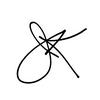I'm working on a hollow sphere with piercing. After the hollowing and turning the outside of the sphere I sanded using a beeswax/mineral oil mixture that I often use. It cuts down the sanding dust and I like the soft, natural finish. Then came the piercing...and this was my first attempt. Using a Dremel and a 3/32 burr I made some slip-ups where the burr was raised too high from the pierced hole and skipped across the surface leaving a shallow groove. I decided to sand the sphere to hopefully remove those grooves. I'm done sanding the sphere, but the pedestal stand and captured ring have not been sanded (that would be a big pain because of the captured ring and beads in the stand. My question is, is there some way to remove the beeswax/mineral oil like a solvent? I now plan on spraying lacquer for a finish. This was done one piece so the pedestal stand and captured ring are part of the sphere. Any suggestions would be appreciated.




 Reply With Quote
Reply With Quote


